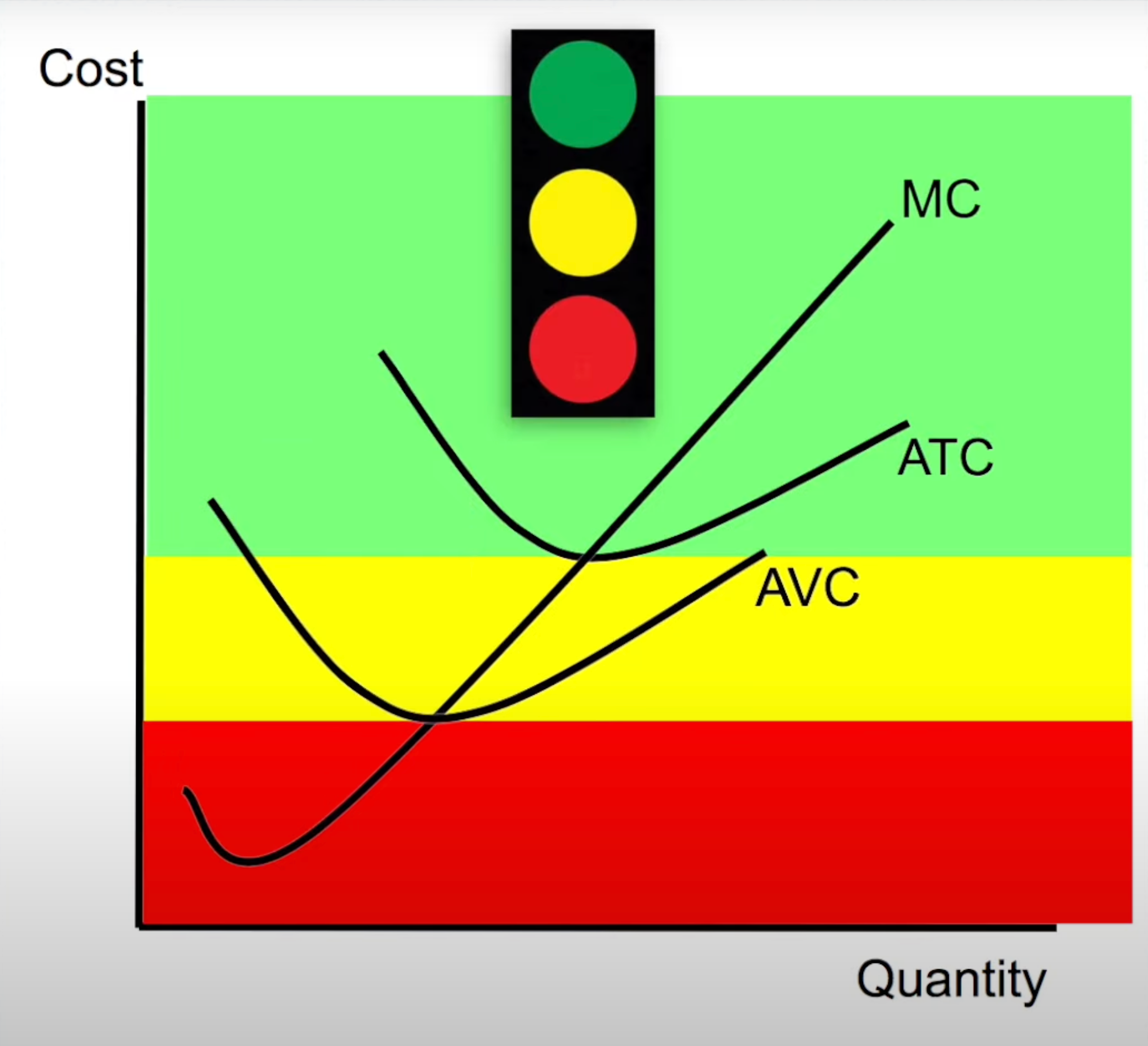Firms’ decisions in the short run and long run depend on their ability to cover costs and respond to market conditions. The short run is characterized by fixed inputs, while in the long run, all inputs are variable, and firms can enter or exit the market freely.
Shutdown Rule
In the short run, firms decide whether to produce based on their ability to cover variable costs:
- If price () ≥ average variable cost (), the firm continues producing because it can cover variable costs and contribute to fixed costs.
- If price () < average variable cost (), the firm shuts down because it cannot cover variable costs, minimizing losses by ceasing production.
This decision minimizes losses because fixed costs are incurred whether or not the firm operates, but variable costs can be avoided by shutting down. You can view the decision-making process through this traffic light graph:

Long-Run Profit Maximization
In the long run, firms adjust all inputs and make entry or exit decisions:
- Firms enter markets when economic profit is positive, increasing supply and reducing price
- Firms exit markets when economic profit is negative, decreasing supply and raising prices
Perfect Competition in the Long Run:
- Economic profit tends toward zero due to free entry and exit (this was described as normal profit earlier)
- As described in 3.5 — Profit Maximization, firms produce at the point where (productive and allocative efficiency).
- Long-run equilibrium ensures firms break even (normal profit) while producing at the most efficient scale.
Graphical Representation
- Short Run:
- The shutdown point is where the price equals the minimum of the AVC curve.
- If , firms operate and aim for .
- Profit or loss is represented by the difference between and , multiplied by quantity ().
- Long Run:
- Entry or exit adjusts the market supply curve, shifting the equilibrium price to ensure for all firms.
- Firms operate at the minimum of the long-run average total cost curve ().